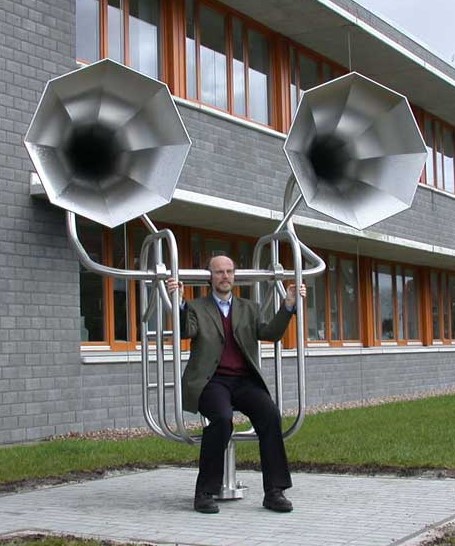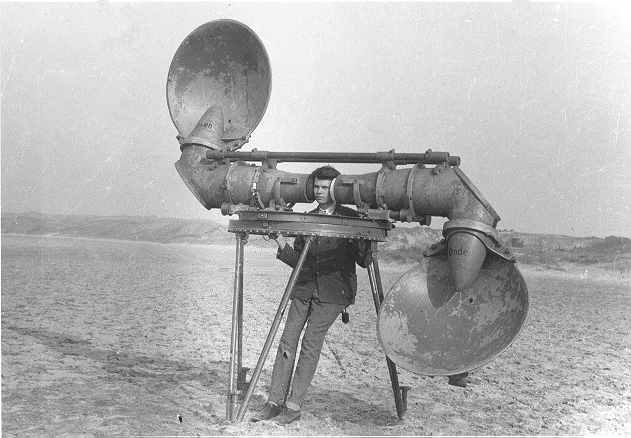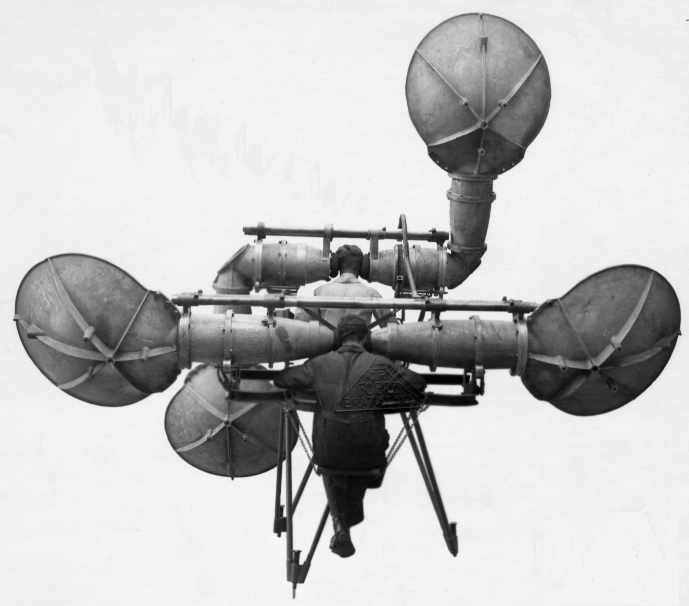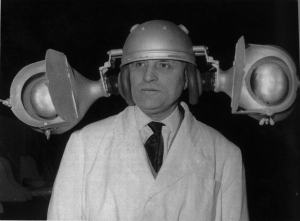Sound localization relies heavily on interaural disparities (i.e. differences in the signals received in the left and right ears), and these differences are larger, making sound localization easier, if the two ears further apart.
Devices which artificially separate the separation between the ears, for example with suitable tubing, can therefore make it easier to pinpoint the direction of sound sources. An impressive example of such a device, the "hearing throne" of the Oldenburg Hearing-Gardens, is pictured here:

Also, if the ears are offset vertically rather than aligned horizontally, this may help judge the elevation of a sound source. The following images, from the collection of the Waalsdorp Museeum in the Netherlands, are from an era when radar was not yet widely available, and show attempts to use this fact to develop devices to locate enemy aircraft:


Further examples of devices intended to improve spatial hearing, including this wonderful portable contraption, can be found at http://www.damninteresting.com/can-you-hear-me-now

